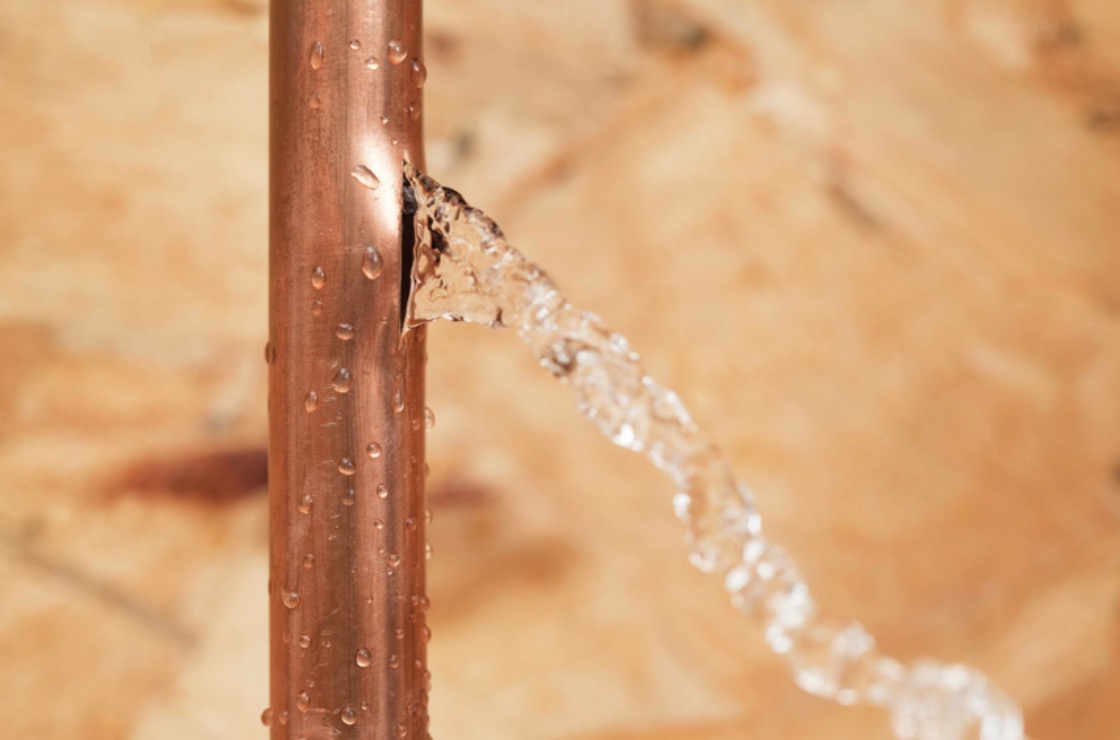Unveiling Common Sources Behind Residential Water Leak Issues
Unveiling Common Sources Behind Residential Water Leak Issues
Blog Article
Were you trying to locate tips about How to detect water leaks in your home?

Leaks not only cause waste of water yet can likewise cause unnecessary damages to your home and advertise unwanted natural development. Water leaks might go unnoticed considering that many of the pipework in our home is hidden. By understanding and looking for day-to-day situations that cause leakages, you can secure your residence from future leaks and also unnecessary damage. Today, we will certainly consider six leak triggers that might be triggering your pipelines to trickle.
Intruding roots
The majority of water leakages start outside the home rather than inside it. You may see damp spots or sinkholes in your lawn, and that might imply that tree roots are getting into water lines causing water to permeate out.
Corroded water systems
As time goes by, your plumbing system ages and also rust such as rust might start eating away the pipes. This could be the root cause of discoloration or warping on your pipes. This calls for an evaluation with your plumber right away. Take into consideration replacing the pipelines given that they are at a higher threat of corrosion than the newer designs if our plumbing system is old.
Defective Pipeline Joints
The point at which your pipes link is often the weakest web link in the waterline. Pipeline joints can weaken over time, resulting in water leakages. The majority of pipeline joints are not easily visible. If you have noisy pipelines that make ticking or banging sounds, especially when the hot water is turned on, your pipe joints are possibly under a great deal of pressure. It is advisable to have your plumber check your system yearly.
Instant temperature level changes.
Extreme temperature adjustments in our pipes can cause them to increase as well as acquire unexpectedly. This growth and also contraction may trigger fractures in the pipelines, specifically if the temperature level are below freezing. It would be best if you watched on just how your plumbing functions. The presence of the formerly discussed scenarios regularly shows a high danger.
Poor Water Connectors
Sometimes, a leak can be brought on by loosened hoses as well as pipes that supply your appliances. More often than not, moving is what causes the loosened water Links. You might find in the case of a washing equipment, a tube might spring a leak as a result of shaking throughout the spin cycle. In case of a water connections leakage, you may see water running straight from the supply line or puddles around your appliances.
Clogged Drains
Clogged drains might be frustrating as well as inconveniencing, but they can often end up triggering an overflow causing rupture pipelines. Keep getting rid of any kind of products that might decrease your drains that could obstruct them to prevent such aggravations.
All the above are reasons for leakages yet not all water leaks result from plumbing leaks; some leakages may come from roof covering leaks. All leakages ought to be repaired right away to avoid water damages.
Leakages not just create waste of water yet can additionally create unneeded damage to your residence as well as promote undesirable natural growth. By comprehending and also looking for day-to-day situations that trigger leakages, you can shield your home from future leakages as well as unneeded damages. Today, we will certainly look at six leak creates that might be creating your pipes to leak.
At times, a leak can be caused by loosened tubes and pipelines that supply your appliances. In case of a water links leak, you may notice water running directly from the supply line or pools around your home appliances.
How To Check For Water Leak In Your Home
How To Check for Leaks
The average household's leaks can account for nearly 10,000 gallons of water wasted every year and ten percent of homes have leaks that waste 90 gallons or more per day. Common types of leaks found in the home are worn toilet flappers, dripping faucets, and other leaking valves. These types of leaks are often easy to fix, requiring only a few tools and hardware that can pay for themselves in water savings. Fixing easily corrected household water leaks can save homeowners about 10 percent on their water bills.
To check for leaks in your home, you first need to determine whether you're wasting water and then identify the source of the leak. Here are some tips for finding leaks:
Take a look at your water usage during a colder month, such as January or February. If a family of four exceeds 12,000 gallons per month, there are serious leaks.
Check your water meter before and after a two-hour period when no water is being used. If the meter changes at all, you probably have a leak.
Identify toilet leaks by placing a drop of food coloring in the toilet tank. If any color shows up in the bowl after 10 minutes, you have a leak. (Be sure to flush immediately after the experiment to avoid staining the tank.)
Examine faucet gaskets and pipe fittings for any water on the outside of the pipe to check for surface leaks.
Undetected water leaks can happen without the home or business owner even realizing. If you suspect a water leak, but not able to find the source. It is time to contact a professional water leak detection service, The Leak Doctor.
How To Find a Water Leak In Your Home
https://www.leakdoctor.com/blog/How-To-Check-For-Water-Leak-In-Your-Home_AE197.html

I ran across that blog post about Most Common Causes of Leaky Pipes when scouting around the web. In case you appreciated our blog entry if you please do not forget to pass it around. Many thanks for going through it.
Ring, relax, resolved! Report this page